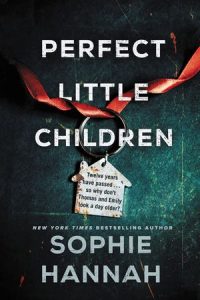The contrast between what a family is supposed to be—comforting, supportive, affectionate, a place of safety and refuge—and the suffering that a warped family is capable of inflicting upon its members is the basis of many a successful and satisfying domestic thriller. I’m fascinated by the thought that something malignant can be bubbling away under a perfectly ordinary façade. What could be more commonplace, or more potentially toxic, than family life?
As readers, we feel sharper sympathy for victims who suffer at the hands of a family member who is supposed to have their best interests at heart, and we feel heightened contempt for wrongdoers who, going against their structural roles as nurturers, defenders or allies, harm those closest to them. When they work, families are sanctuaries, but home can also be a place to hide behaviors that would not be tolerated in wider society; bullies can terrorize, and manipulators can control, coerce and constrain behind closed doors.
In my new psychological thriller Perfect Little Children (published in the UK as Haven’t They Grown), something is seriously wrong in the Braid Family. Here’s the blurb:
All Beth has to do is drive her son to his Under-16s away match, watch him play, and bring him home.
Just because she knows that her former best friend lives near the football ground, that doesn’t mean she has to drive past her house and try to catch a glimpse of her. Why would Beth do that, and risk dredging up painful memories? She hasn’t seen Flora Braid for twelve years.
Article continues after advertisementBut she can’t resist. She parks outside Flora’s house and watches from across the road as Flora and her children, Thomas and Emily, step out of the car. Except…
There’s something terribly wrong.
Flora looks the same, only older — just as Beth would have expected. It’s the children that are the problem. Twelve years ago, Thomas and Emily Braid were five and three years old. Today, they look precisely as they did then. They are still five and three. They are Thomas and Emily without a doubt — Beth hears Flora call them by their names — but they haven’t changed at all.
They are no taller, no older.
Why haven’t they grown?
Article continues after advertisement
A lot of what happens to my protagonist, Beth, in the opening scenes of Perfect Little Children did actually happen to me (none of the horrific bits, thankfully!). I was taking my son to a football match and, knowing that we were quite close to the new house of a former friend of mine whom I hadn’t seen for years, I decided to go and have a look. While I was outside her house in my car, my friend arrived home. Seeing her felt really strange. She looked so much older, and I figured I did too. It was like landing in the past, but a past that had aged, a past I didn’t want go back to. It was all a bit unexpectedly chilling! A thought popped into my head, “Imagine if her kids got out of the car and looked just like they did when I last saw them, when they were 5 and 3 years old.” That idea made me shiver, and I thought, “What a brilliant premise for a novel that would be.” Although it’s a creepy idea, there’s no supernatural element in the plot, which made it even more challenging and fun to write.
I’ve long been a fan of creepy and dysfunctional families in literature. Here are the ones that have burned themselves into my memory forever.

Oranges Are Not The Only Fruit, by Jeanette Winterson
The protagonist in this memoir describes her adoptive mother as “Old Testament through and through” which is a suitably chilling description of a woman who dominates and rages her way through family life. The scene where members of the church congregation are brought in to exorcise the lesbianism out of Jeannette is quite terrifying. A beautifully written book, and a chilling exploration of how the parent/child relationship can easily tip over into tyranny and oppression.
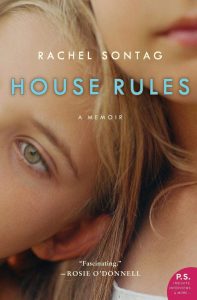
House Rules, by Rachel Sontag
Of all the memoirs I’ve read, this one includes the family I would least like to belong to (and that’s saying something!). There’s no physical abuse here but the psychological harm inflicted is horrifying and the gaslighting staggering. The author evokes her controlling and suffocating home environment with a meticulousness that is almost unbearable. I wanted to jump on a plane to rescue her immediately, although, mercifully, she had already rescued herself before writing the book.
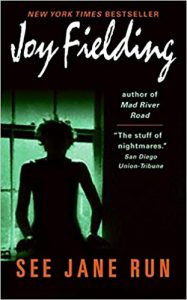
See Jane Run, by Joy Fielding
The protagonist of this novel finds herself in a store, covered in blood, in possession of $10,000 and with no memory of who she is or how she came to be there. Her only chance of finding out the truth and getting her life back comes in the form of a stranger who says he’s her husband. There’s nothing scarier than a family that wants to claim you as its own when you have no way of knowing if you truly belong to it. This is a flawless and desperately gripping psychological thriller.
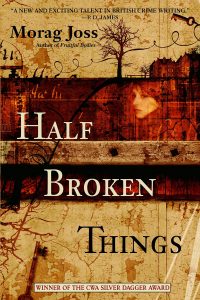
Half Broken Things, by Morag Joss
When three damaged strangers are thrown together by fate to form an unconventional family, their strong bond and love for their temporary home at first gives them a taste of the happy family life they’ve never had. However, when the outside world threatens their idyll, they are pushed over the edge into darkness. Cobbled together they may be, but in terms of the disturbing behavior created by their family dynamic, they rival the very worst. This is one of the very best crime novels I have ever read: atmospheric, haunting and deeply moving.

Wuthering Heights, by Emily Bronte
The Earnshaws and the Lintons have to be the most dysfunctional blended family in the whole of Yorkshire (and possibly the whole of fiction!) The family legacy of jealousy, greed and cruelty blights several generations and spans decades in an endless cycle of misery and abuse. I love this book for many reasons, but the psychological insight into (admittedly extreme!) family dynamics and the exploration of malevolent heritage is perfectly judged and unforgettable.
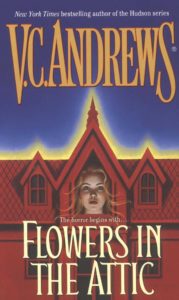
Flowers in the Attic, by Virginia Andrews
This novel is the story of four siblings who, for years, are hidden away from the world by their mother, with devastating results. I read it as a teenager and it made a lasting impression on me. The idea that some children are completely unable to rely on the adults who should care for them struck me as so true, and utterly terrifying.
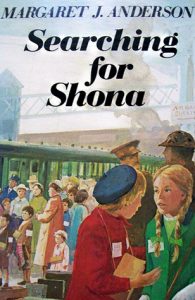
Searching for Shona, by Margaret Jean Anderson
Set during World War II, this was one of my favorite books as a child. Two evacuees swap identities on their way to new lives, with Canada-bound Marjorie taking the place of the orphaned Shona and heading to the Scottish Highlands. Most of the book is not concerned with any family weirdness, but the brilliant twist ending is one of the most sinister and frightening family horror moments of all time. It gave me such an unexpected jolt at the time of reading that it’s stuck with me ever since.
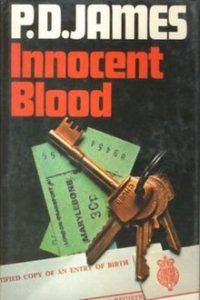
Innocent Blood, by PD James
This novel about an adopted woman who discovers that her birth parents were two famous murderers is disturbing in many ways, but the most chilling and creepy detail about her parents—the one that makes her think twice about whether to re-establish a relationship—has nothing to do with murder and gives the book a gasp-out-loud moment that had me reeling. One of the most surprising and powerful novels I’ve ever read.

Crooked House, by Agatha Christie
This is one of Dame Agatha’s favorites of her own novels and it’s also generally thought to be one of her best. When the grandfather of the Leonides Family is murdered, suspicion and paranoia infect the mansion in which his extended family all live together. Conducting her own investigation, the sinister and charismatic granddaughter spies and keeps notes on the rest of the family. The saying ‘There is a child among us taking notes’ might have been invented for this novel!
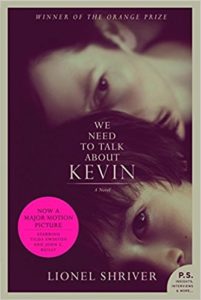
We Need To Talk About Kevin, by Lionel Shriver
This story of a mother trying to reckon with the horrifying atrocity committed by Kevin, her teenage son, has astounding emotional and psychological depth. Every character in the family is fascinating and the dynamic is believable and complex. As Kevin’s mother attempts to understand what role her relationship with him played in the tragedy, uncomfortable questions around culpability and responsibility within families are raised—and not neatly answered—in this disturbing, powerful and brilliant book.
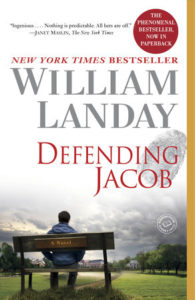
Defending Jacob, by William Landay
This is both a brilliant courtroom thriller and a heart-breaking family tale in which the 14-year-old son of an assistant district attorney is accused of the murder of a fellow student. The intricacies of family bonds, the nature of trust and the boundaries of parental love are handled brilliantly, and the most unnerving thing here is that one can never be sure, even after the brilliant resolution, just who is the creepiest family member and why.

The Family Upstairs, by Lisa Jewell
This book is enough to scare anyone off attempting any kind of reconstituted family arrangement! As a young woman investigates the fate of her birth parents and the nightmarish story of how she came to exist, it becomes horribly apparent that the sinister tendrils of the past are creeping into her present. It’s a superb study of how an ordinary, happy family can be corrupted and warped into something dangerous after becoming entangled with a far more damaged one.
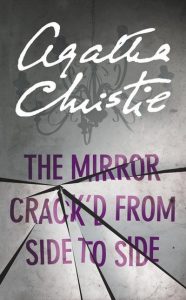
The Mirror Cracked From Side To Side, by Agatha Christie
This book is a masterclass not only in how to write imaginative and unpredictable detective fiction but also in how not to treat one’s adoptive children. This novel sees Miss Marple at her brilliant best investigating the murder of film star Marina Gregg, who has a somewhat complicated relationship with her children. The key to the mystery in this book is to be found in an understanding of the human heart and how grudges we didn’t even know we had can suddenly surface and destroy lives.
Featured image: Daniel Schultz II, Family Portrait, Germany 1664.


